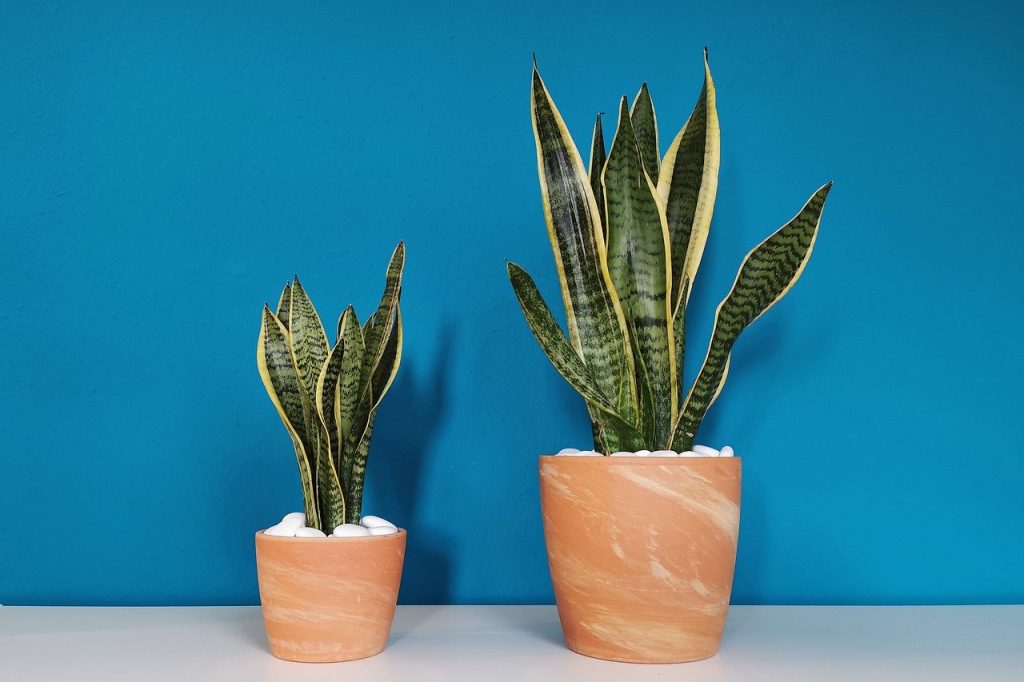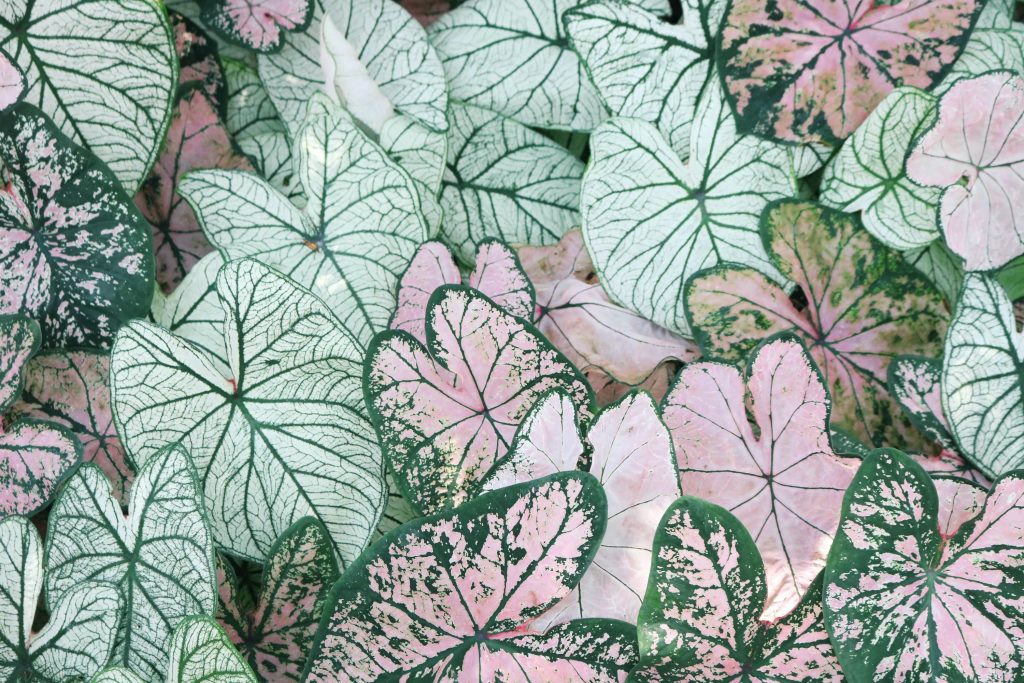The Stromanthe Triostar plant is one of my all-time favorite pink houseplants. So I’m loving the chance to share all I’ve learned about this naturally stunning plant with you!
While some house plants are grown chiefly for their flowers, Stromanthe Triostar is better known for its glorious foliage. The deep green, tropical-type leaves are elegantly shaped, and best of all are the gorgeous pink-and-white patterns on each. These make every individual plant totally unique.
Whatever you want to know about the Stromanthe Triostar, I’ve got you covered with this plant care guide. I’ve included an introduction to what this attractive plant is all about, plus my Stromanthe Triostar plant care tips to ensure your plant stays as healthy as possible. Enhancing your home decor all the while, of course.

Table of Contents
About Stromanthe Triostar
The Stromanthe Triostar really is special and quite unlike anything else on earth. Native to the Amazon rainforest in Brazil, it thrives when given the right care and a healthy plant is bound to become the envy of everyone you know!
It’s also surprisingly easy to care for, making it one of the best houseplants for beginners. I actually got mine as a housewarming present from my friends, so keep the Stromanthe Triostar in mind when choosing a gift for a plant lover friend.
Read on to find out all the useful hints and tips you might need. These include where to put it, how often to water it, plus whether or not it requires pruning. We’ll also run through common issues and if it’s possible to propagate it.

Stromanthe Triostar Facts
Origin
This plant originates in the Amazon rainforest, and is native to Brazil.
Size
Your Stromanthe Triostar – or Stromanthe Sanguinea – can be expected to reach a size of around 2 to 3 feet (60 to 90 centimeters) at full maturity.
Flowering
The Stromanthe Triostar only rarely when kept as a houseplant, and when white blooms do appear this tends to occur around early springtime.

Stromanthe Triostar Plant Care
Sunlight
Your Stromanthe Triostar will reward you handsomely if you place it just where it really wants to be. This is in an indirectly-lit spot, as bright sunlight can actually scorch the leaves.
Think about the conditions in its rainforest home, and try to replicate these as closely as possible when positioning it. Dappled light is perfect. Access to a source of indirect light will ensure those lovely colors don’t fade, as they might do if it doesn’t get as much daylight as it would like.
It’s also a good idea to turn the plant at regular intervals, as that lovely foliage will naturally grow toward the sun. We’ve found that weekly is ideal – when we remember, that is! Dusting now and then can also help the leaves make the most of the sun’s rays.
Temperature
The ideal temperature range for this pretty plant to flourish is around 65℉ and 80℉ (around 18℃ to 26℃). Don’t place it anywhere that’s prone to chills or draughts, such as by an open window or door, or a vent.
You should also avoid keeping it near any sources of heat, such as a radiator or fire, or cold like an air-con unit.

Humidity
The origin of this species gives you some clue as to the conditions this plant prefers – yep, you guessed it, a high level of humidity is just what it wants! Otherwise the leaves could turn brown, and may also become restricted in size due to hindered growth.
Try keeping your Stromanthe Triostar in a more moist environment, such as a steamy bathroom. Of course you may not want to hide it away in there, so a clever hack here is to install a plant humidifier. This is what we do – who wants to hide such an appealing plant away?
Watering
As with many plants, Stromanthe growth slows during winter, so it requires less water then. Even in summer, over-watering can result in root rot, so do take care. It’s best to water this plant only when the top layer feels dry. I always use my plant moisture meter to make sure I’m watering only when needed.
Do keep it in a pot with a hole at the bottom, so you can place that into a saucer. That way excess moisture can escape, instead of causing root damage. Any excess water ending up in the saucer should then be poured away.
Your plant may also look and feel healthier if you use filtered water – who wants to consume more chlorine or fluoride than they really need? Also avoid using water that’s too cold – this plant likes to keep warm!
Feeding
The peak growth season is spring and summer, so during this period you can fertilize your plant with a regular house plant feed. Always add this when the soil is damp (but not wet) rather than dry, and use a 50/50 dilution with plain water.
Organic feeds are often weaker, so they may not require dilution. Whatever you use, do take care. Fertilizer that’s too strong can be a cause of root burn in this species. It doesn’t need feeding in winter, when growth slows down.

Potting
We’ve found through trial and error that Stromanthe Triostar can flourish when re-potted every couple of years or so. Always use a container that has enough space for the roots, but isn’t too deep as this can result in trapped water going stagnant. Which smells pretty unpleasant!
Remember to use a pot with at least one good-sized drainage hole and to place this in a saucer. After watering, any excess fluid should be removed so it can’t go stagnant (and stinky).
Pests
Small house plant pests may infest a Stromanthe Triostar from time to time. Common culprits include spider mites and mealybugs, and if left untreated these will breed and colonize your flora.
A plant which is already healthy is naturally more resistant to bugs, so do make sure you follow all the other care tips to keep yours in tip-top shape! Aphids, mold and fungus can also be an issue when the humidity level isn’t right.
Trimming
Trimming away old leaves that have turned yellow or brown can help to stimulate new growth – as well as making the plant look much more attractive (I don’t know about you, but we don’t really dig that look)!
Carefully pull away any leaves that have changed color completely. As long as you’ll be removing under 20% of the foliage, you can also trim any browned or yellowed sections neatly with a pair of sharp scissors.
Make sure you clean the scissors before and after each cut with some rubbing alcohol. This will avoid spreading any infection or infestation, and will also preserve the life of the blades.
Soil
Ideally the soil a Stromanthe Triostar is planted in should drain easily to avoid the plant becoming bogged down – which in turn can lead to rot. Earth that’s heavy in clay or thickly-textured isn’t right for this plant, which wants to thrive in light, breathable soil.
Propagation
While it’s possible to propagate this plant, it cannot be done by taking and nurturing a cutting. Instead you’ll need to divide some of the root clumps from the main plant.
This should be done after winter but before the main growth period, and when the rhizome already has several leaves. It can be tricky timing this right, so don’t do it until you’ve become familiar with the plant’s annual growth cycle.
Safety
Your Stromanthe Triostar is non-toxic, so it’s perfectly safe to keep it in an environment where pets or young kids might be tempted to try a little nibble.

Common Issues with Stromanthe Triostar
This plant can suffer from leaves that turn yellow or brown. As we’ve found out, several factors could be to blame when this happens.
Water and Humidity
To keep the leaves pink and bright, make sure to water regularly – especially during the warmer months – but aim to keep the soil damp rather than wet. Sodden soil can lead to soggy, rotten roots. This is often why the leaves start to change color to brown or yellow.
Using filtered rather than plain tap water can also be beneficial, as the Stromanthe Triostar isn’t too keen on the chemicals often found in regular water. Well ours isn’t, anyway! While we’re on the topic of water, remember that this plant also thrives when humidity is high. Just as in its Amazonian home.
If you’ve actually forgotten to water your plant – it happens. Don’t sweat it: soaking it is far more beneficial. To do this, place the pot (without the saucer) in a container with a few inches of water in it for around 40 to 50 minutes. If the soil at the top is still dry, add a little extra directly to this area before draining and replacing your plant.
Temperature
It’s worth getting hold of a thermometer so you can make sure the room temperature range is right – aim for about 65℉ to 80℉.
The Growth Cycle
Some yellowing and browning will occur naturally, as the plant’s older leaves make way for lush new foliage. If the affected leaves are found toward the base of the plant, this could simply be nature taking its course.
Where you suspect this to be the case, carefully remove any entirely brown or yellow leaves. We also trim off affected areas with a pair of sharp scissors. Proceed with caution, though: you never want to remove more than a fifth of the foliage.
House Plant Pests
Browning or yellowing leaves can also be a sign of pest infestation, however. So check your specimen over carefully for the likes of mealybugs and spider mites.

Stromanthe Triostar FAQs
Is Stromanthe Triostar an indoor plant?
The pretty pink, white and deep green leaves of the Stromanthe Triostar can thrive indoors, given the right care. It is often successfully kept as a house plant, and does very well provided conditions such as the position, water, humidity, temperature, soil and container are favorable. I keep mine in my living room, by the balcony doors.
Does Stromanthe Triostar need sunlight?
Stromanthe Triostar is native to the Amazon rainforest, so the best option is dappled sunlight – just like the rays shining through the leaves of the trees. Direct light can scorch the leaves, while insufficient light can mean the colors aren’t so vibrant.
How do I keep my Stromanthe Triostar healthy?
Getting the watering just right can be critical here, as overwatering can cause root rot. This leads to the browning or yellowing of the leaves, so only water when the top layer of soil is drying out. You should also ensure the temperature, humidity level, soil, light level and pot are appropriate.

Final Thoughts on Stromanthe Triostar Plant Care
Like the Tradescantia Nanouk, the beautiful Stromanthe Triostar plant isn’t too tricky to care for once you understand what it really requires in order to flourish. Growing this tropical piece of flora at home is incredibly rewarding, and what addition to your home decor could be more stunning?
Let me know if you have any questions about the Stromanthe Triostar in the comments field below, I’ll be more than happy to help!
Check out more of our plant care guides below:




